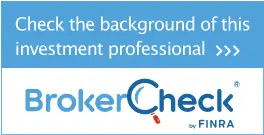Plan Conversion in Volatile Markets
Your team has undertaken the due diligence to research various service providers. Based on a myriad of data points, experience, potential interviews of candidates, internal analysis and discussion, your team has decided it is prudent to change your plan’s recordkeeper(s).
The choice of whether to proceed with a conversion during an unusually high volatile market is a difficult one. There are three primary concerns:
- How long will the money be out of the market, if at all?
- How long is the blackout period during which participants will be unable to move their account balances amongst investment options?
- Can the recordkeepers handle the conversion with staff working remotely?
One issue with conversion is having the money out of the market for a period of time. Even though missing such a day could occur at any time, fiduciaries are obviously much more on notice of the potential of such large swings when the market is experiencing extremely large swings on a daily basis for a protracted period of time. In other words, it might be argued that fiduciaries had a greater likelihood of knowing such swing could occur in the current market conditions than under normal market conditions. As a result, if your plan converted at an inopportune time, it is possible that participants could cry “foul!” and bring a suit for imprudent timing. That is not to say the suit would possess a likelihood of success, but any suit is a nuisance of time and money for any plan sponsor. You may want to consider doing a transfer in kind of all funds currently in the plan. That way plan assets are not out of the market for more than a brief period of time and you do not have to get participants to take any action i.e., they remain invested as they were. You still have the issue of participants not being able to change their allocations during blackout but that is always an issue. You need to ensure (1) both recordkeepers are willing and able to execute a transfer in kind, (2) the new recordkeeper has all existing funds on their platform, and (3) any closed funds grant an exception allowing the transfer. Alternatively, as fiduciaries, you should weigh the competing factors (for instance, if the move is driven by plan sponsor service concerns, maybe now is not the right time to move, but if it’s driven by a healthy cost savings then perhaps the prudence of such savings outweighs the above considerations) and determine which path to take that will be in the best interest of participants.
Re-enrollment under these market conditions may present a greater challenge given you may have people furloughed and/or difficult to contact. It might not be the optimal time to schedule any conversion that requires action from the employee. You obviously have ERISA Section 404(c) protection defaulting everyone into a qualified default investment alternative (QDIA) but you need to be concerned about the public relations aspect of employees feeling that the proper communication of these changes was, or was not, received.
If you want to implement fund changes as part of the conversion it might be advisable to wait until 30 days after emerging from blackout of the conversion to then issue a fund change notice to participants with the changes occurring 60 days after conversion. Because the fund changes typically happen overnight (check with your recordkeeper) that should eliminate concerns about money being out of the market. It also pushes off the major changes to the investment lineup to hopefully a point in time when the markets have settled, and participants are back to work. An important note in undertaking this strategy is to get the new recordkeeper to maintain the new pricing for those 60 days, even if they will not get any indirect revenue expected from any fund changes during the first 60 days.
Another big consideration is the ability of staff at each recordkeeper to handle a conversion. Many companies have people working remotely, including your recordkeeper. There are typically multiple people at each recordkeeper involved in the conversion process. The question will be whether their ability to work together remotely will cause issues. It is reasonable to suspect that everything will take longer to accomplish. Thus, it is advisable that plan sponsors seek realistic information from the recordkeepers as to how their operations are being undertaken at present.
The bottom line is as a plan sponsor and a fiduciary, you should be aware of the various considerations, weigh those competing with one another and ultimately make an educated and prudent decision. The last thing you want is to force a change only to end up with significant issues occurring.
For any questions related to volatile markets, please do not hesitate to contact Mike Del Re III at 203.878.8194
